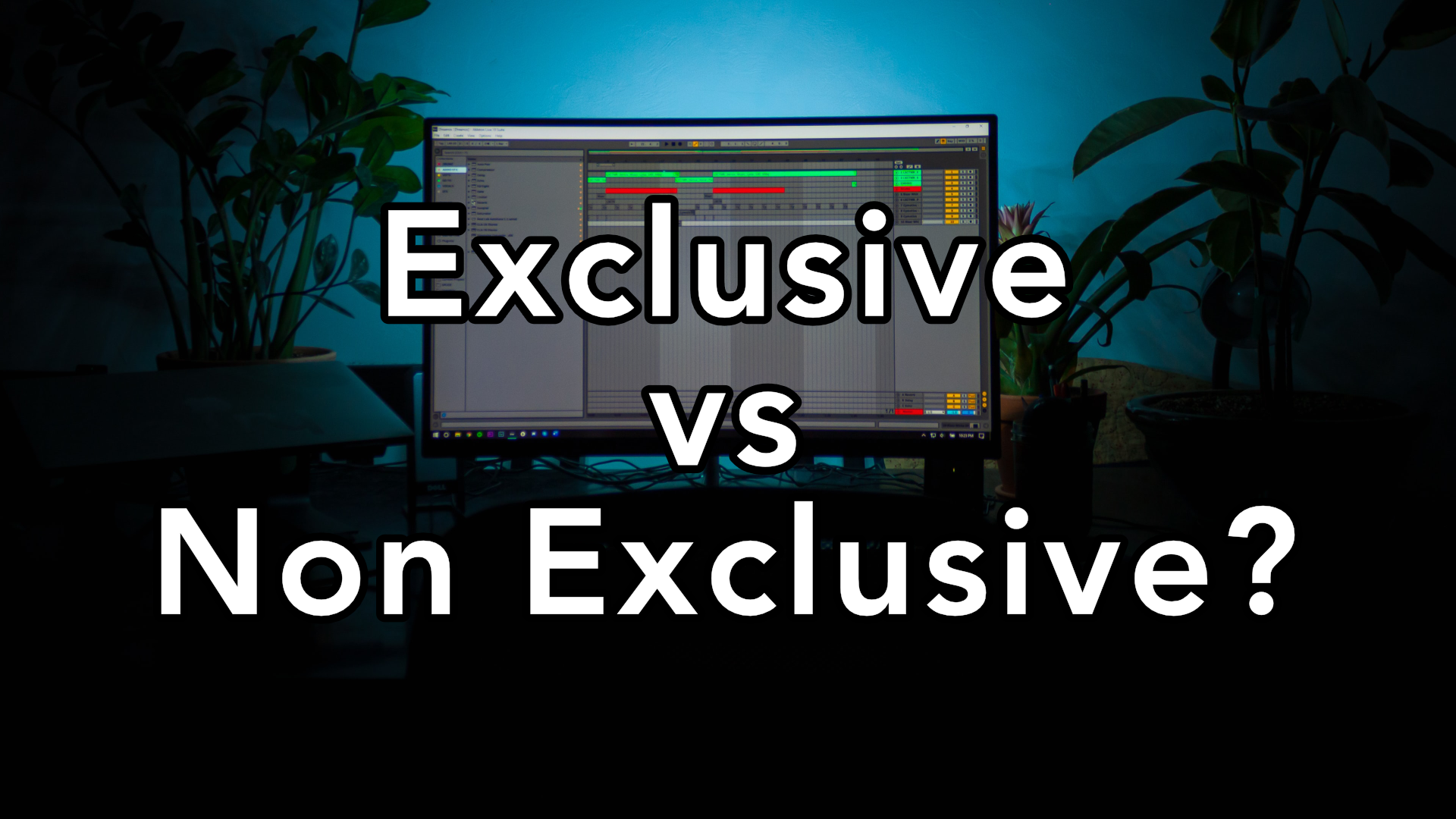 There are 2 main models of production music for licensing for media. Either you license your tracks using an exclusive publisher, or you go to several stock music libraries that can license your music on a non-exclusive contract.
There are 2 main models of production music for licensing for media. Either you license your tracks using an exclusive publisher, or you go to several stock music libraries that can license your music on a non-exclusive contract.
What should you choose for your music productions? Let’s explore the pro’s and con’s of each model
Exclusive Music Licensing
This model means you are signing way your rights to your music, which means the partner you choose to sign with (the music library) will have exclusive rights to sell (meaning “license”) your tracks. In most cases you are not even allowed to distribute or publish your tracks on Spotify etc. because they actually own the rights to the music. That is one downside of this model. The other main downside is that your tracks may end up “rotting” in their catalogue and never get licensed. You are putting your trust in their capability of selling, marketing power, network and contacts in the industry etc.
Now for the main upsides of exclusive music licensing: the main one is “more money”. Meaning the actual sync license deals are a lot higher in price than stock music libraries with non-exclusive licenses. Instead of selling licences for around 20-50 dollars per track on non exclusive libraries, you can sometimes get syncs worth 1000+ dollars for 1 single license.
The other main upside of exclusive music libraries is that you become part of an actual team, instead of a small fish in a big ocean which is the case on stock music non exclusive libraries. If you sign to an exclusive music library you build personal relationships with their team. You get honest and real constructive feedback on your tracks.
Furthermore, you can get opportunities to write for “briefs” which are basically current music pitches where brands and campaigns look for very specific music for a project. You may even get custom music opportunities where you get to write music tailor-made for a specific project (even scoring to picture).
Summary: The exclusive music licensing model works best if you have real career goals and long term patience in writing production music. And you will get the best results if you not only focus on improving your music, and your efficiency and productive output, but also build relationships with the people on the team.
Non Exclusive Stock Music
The non exclusive model for music licensing is often called “stock music” because it is like a massive inventory of 100K+ tracks in some cases, where you end up a tiny fish in the big sea of tracks in the catalogue. You get hardly any support, and definitely no personal contact or input from their team.
The websites of these stock music libraries are basically like automated catalogues of music, where you are expected to do all the work, and then sit and hope that customers find your tracks among the other 100000 tracks, and want to sign a license. Most customers are online projects like social media marketing videos, background music for YouTube etc. And thus, the license deals are often in the low 10’s of dollars.
Years ago you could indeed make a good living from this model simply because you could rely on “quantity” of license sales per month to make up for the low license prices. But sadly from what I heard from lots of professional music composers and producers, those days are gone. It has simply become so saturated that it’s only a very few lucky ones that can still make a full time income from the non exclusive stock music model.
Now, the upside is that you still own the music, so you can sell it on several non exclusive music libraries. And you can still distribute and publish the music on Spotify, and where ever you like, because it’s still YOUR MUSIC.
Summary: it’s the small fish in the big sea model, with tiny license prices that you hopefully can make up for in quantity. But sadly, the only real upside is that you own the rights to be music and can therefore publish it on several stock music libraries, as well as distribute the tracks yourself as an artist.
